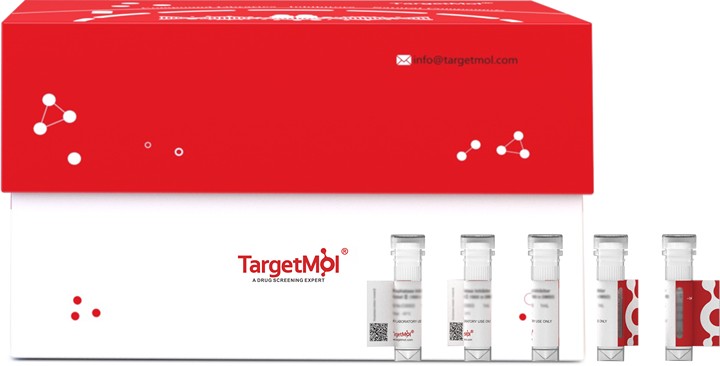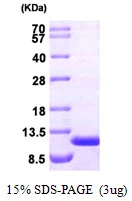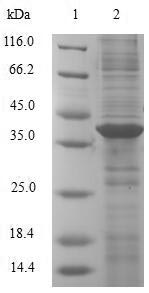
AHSP Protein, Human, Recombinant
TMPY-03603
Product group Proteins / Signaling Molecules
Overview
- SupplierTargetMol Chemicals
- Product NameAHSP Protein, Human, Recombinant
- Delivery Days Customer16
- CertificationResearch Use Only
- Scientific DescriptionAHSP, also known as ERAF, is a conserved mammalian erythroid protein which belongs to the AHSP family. It is expressed in blood and bone marrow. AHSP facilitates the production of Hemoglobin A by stabilizing free alpha-globin. It rapidly binds to ferrous alpha with association (k(AHSP)) and dissociation (k(AHSP)) rate constants of ~1 microm(-1) s(-1) and .2 s(-1), respectively, at pH 7.4 at 22 °C. A small slow phase was observed when AHSP binds to excess ferrous alphaCO. This slow phase appears to be due to cis to trans prolyl isomerization of the Asp(29)-Pro(3) peptide bond in wild-type AHSP because it was absent when alphaCO was mixed with P3A and P3W AHSP, which are fixed in the trans conformation. This slow phase was also absent when met(Fe(3+))-alpha reacted with wild-type AHSP, suggesting that met-alpha is capable of rapidly binding to either Pro(3) conformer. Both wild-type and Pro(3)-substituted AHSPs drive the formation of a met-alpha hemichrome conformation following binding to either met- or oxy(Fe(2+))-alpha. The dissociation rate of the met-alpha AHSP complex (k(AHSP) ~ .2 s(-1)) is ~1-fold slower than that for ferrous alpha AHSP complexes, resulting in a much higher affinity of AHSP for met-alpha. Thus, in vivo, AHSP acts as a molecular chaperone by rapidly binding and stabilizing met-alpha hemichrome folding intermediates. The low rate of met-alpha dissociation also allows AHSP to have a quality control function by kinetically trapping ferric alpha and preventing its incorporation into less stable mixed valence Hemoglobin A tetramers. Reduction of AHSP-bound met-alpha allows more rapid release to beta subunits to form stable fully, reduced hemoglobin dimers and tetramers.
- Storage Instruction-20°C
- UNSPSC12352202


